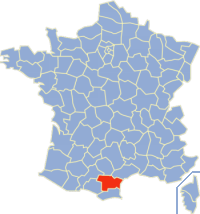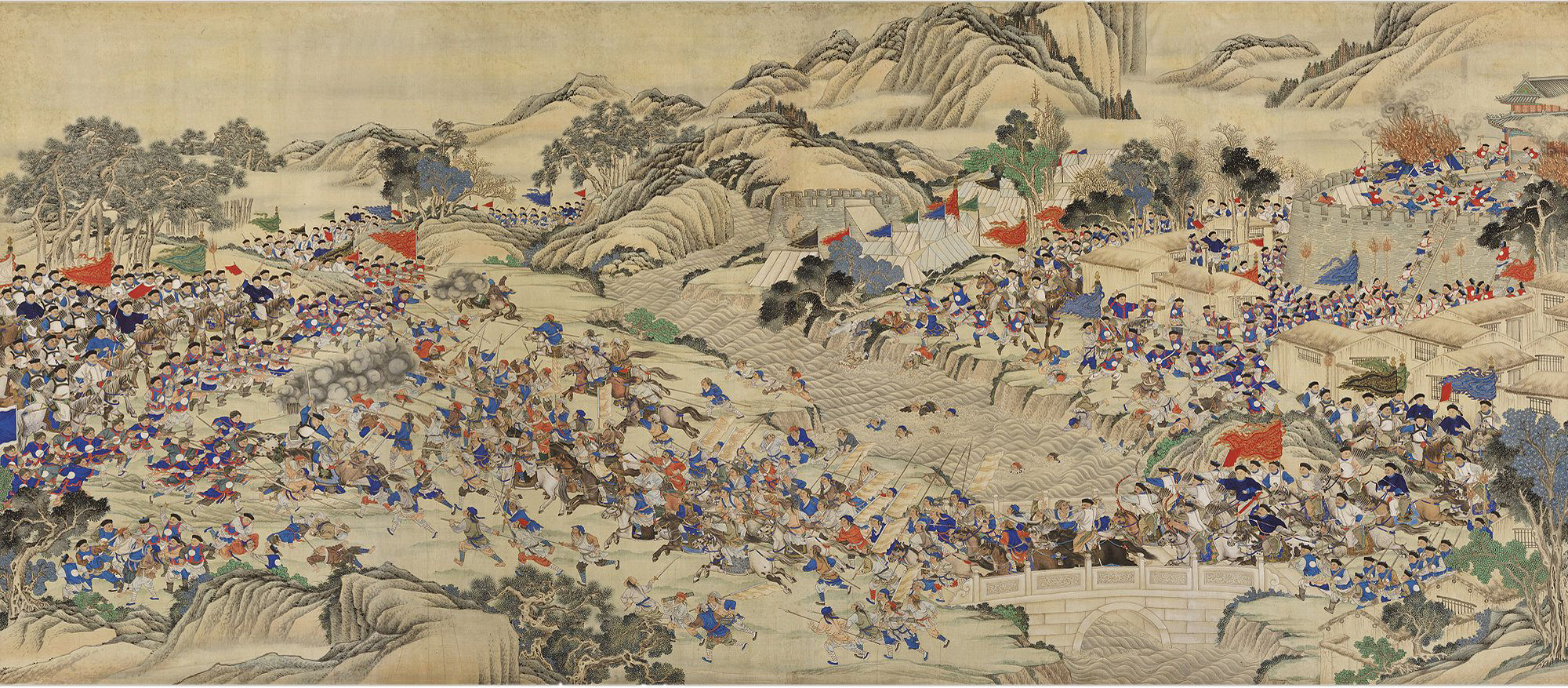|
Alzonne
Alzonne (; oc, Alzona) is a commune in the Aude department in the Occitanie region of southern France. The inhabitants of the commune are known as ''Alzonnois'' or ''Alzonnoises'' Geography The commune is located in the Lauragais valley some 15 km west of Carcassonne and 15 km east of Castelnaudary. The route D6113 passes through the commune from west to east between these two cities and becomes National Route N113 near Carcassonne. The Autoroute des Deux Mers (A61, E80) passes just 1 km south of the commune but the nearest exit is to the D43 near Bram. Other roads running into the commune are the D8 from Montolieu in the north, the D34 from Saint-Martin-le-Vieil in the northwest, and the D33 running west to east from Bram to Villesèquelande forms the southern border of the commune with a connecting road running north to the village. The Bordeaux-Sète railway runs west to east across the southern part of the commune but there is no station. The nearest stat ... [...More Info...] [...Related Items...] OR: [Wikipedia] [Google] [Baidu] |
Communes Of The Aude Department
The following is a list of the 433 communes of the Aude department of France. The communes cooperate in the following intercommunalities (as of 2020):BANATIC Périmètre des EPCI à fiscalité propre. Accessed 3 July 2020. * *Communauté d'agglomération Le * [...More Info...] [...Related Items...] OR: [Wikipedia] [Google] [Baidu] |
Carcassonne Agglo
Carcassonne Agglo is the ''communauté d'agglomération'', an intercommunal structure, centred on the city of Carcassonne. It is located in the Aude department, in the Occitanie region, southern France. It was created in January 2013. Its seat is in Carcassonne.Fiche signalétique CA Carcassonne Agglo BANATIC Its area is 1062.2 km2. Its population was 112,852 in 2017, of which 46,031 in Carcassonne proper.Comparateur de territoire [...More Info...] [...Related Items...] OR: [Wikipedia] [Google] [Baidu] |
Françoise De Veyrinas
Françoise de Veyrinas (4 September 1943 – 16 August 2008), born Gardey de Soos, was a French politician and Member of the European Parliament. Biography Elected to Toulouse representing the UDF and the UMP uninterrupted since 1983, she was ''première adjointe'' ( "First Assistant") to her town from 1995 until 2008 and vice-president of the ''Communauté d'agglomération du Grand Toulouse'' ( loosely, "Community of the Conurbation of Greater Toulouse"). She sat on the Regional Mid-Pyrénées Council and then the General Council of Haute-Garonne. She was also a Member of the European Parliament after François Bayrou resigned. A specialist in social issues, she was briefly (May–November 1995) ''Secrétaire d'État aux Quartiers en difficulté'' ( "Secretary of State for Quarters in Difficulty") in the first Juppé government. Voted a member of the UDF-CDS in 1993, she then failed to be elected in the legislative elections of 2002 and 2007. In 2008, though re-elected ... [...More Info...] [...Related Items...] OR: [Wikipedia] [Google] [Baidu] |
Soissons
Soissons () is a commune in the northern French department of Aisne, in the region of Hauts-de-France. Located on the river Aisne, about northeast of Paris, it is one of the most ancient towns of France, and is probably the ancient capital of the Suessiones. Soissons is also the see of an ancient Roman Catholic diocese, whose establishment dates from about 300, and it was the location of a number of church synods called " Council of Soissons". History Soissons enters written history under its Celtic name, later borrowed into Latin, Noviodunum, meaning "new hillfort", which was the capital of the Suessiones. At Roman contact, it was a town of the Suessiones, mentioned by Julius Caesar (''B. G.'' ii. 12). Caesar (''B.C.'' 57), after leaving the Axona (modern Aisne), entered the territory of the Suessiones, and making one day's long march, reached Noviodunum, which was surrounded by a high wall and a broad ditch. The place surrendered to Caesar. From 457 to 486, under Aegi ... [...More Info...] [...Related Items...] OR: [Wikipedia] [Google] [Baidu] |
Rébenty Aqueduct
Aqueducts on the Canal du Midi allow the canal to intersect and cross over natural streams. There are two exceptions, the first is the Herbettes Aqueduct where it crosses a four-lane highway in Toulouse. Another exception is where it intersections with the Libron river and the crossing is accomplished via the Ouvrages du Libron. Aqueducts on the Canal du Midi will be named either as an aqueduct (french: aqueduc) or a canal bridge (french: pont-canal). In most cases, the aqueduct is a more simple structure, just allowing the stream to pass under the canal. The pont-canal, on the other hand, is a much larger bridge style structure with perhaps more than one arch. }) , - , A , , 12.8 , , Madron Aqueduct , , , , (french: Aqueduc de Madron) , - , A , , 18.4 , , Rieumory Aqueduct , , , , (french: Aqueduc de Rieumory) , - , A , , 21.2 , , Juncasse Aqueduct , , , , (french: Aqueduc de la Juncasse) , - , A , , 26.5 , , Nostreseigne Aqueduct , , , , (f ... [...More Info...] [...Related Items...] OR: [Wikipedia] [Google] [Baidu] |
Socialist Party (France)
The Socialist Party (french: Parti socialiste , PS) is a French centre-left and social-democratic political party. It holds pro-European views. The PS was for decades the largest party of the "French Left" and used to be one of the two major political parties in the French Fifth Republic, along with The Republicans. It replaced the earlier French Section of the Workers' International in 1969 and is currently led by First Secretary Olivier Faure. The PS is a member of the Party of European Socialists, Progressive Alliance and Socialist International. The PS first won power in 1981, when its candidate François Mitterrand was elected president of France in the 1981 presidential election. Under Mitterrand, the party achieved a governing majority in the National Assembly from 1981 to 1986 and again from 1988 to 1993. PS leader Lionel Jospin lost his bid to succeed Mitterrand as president in the 1995 presidential election against Rally for the Republic leader Jacques Chirac, but ... [...More Info...] [...Related Items...] OR: [Wikipedia] [Google] [Baidu] |
French Section Of The Workers' International
The French Section of the Workers' International (french: Section française de l'Internationale ouvrière, SFIO) was a political party in France that was founded in 1905 and succeeded in 1969 by the modern-day Socialist Party. The SFIO was founded during the 1905 Globe Congress in Paris as a merger between the French Socialist Party and the Socialist Party of France in order to create the French section of the Second International, designated as the party of the workers' movement. The SFIO was led by Jules Guesde, Jean Jaurès (who quickly became its most influential figure), Édouard Vaillant and Paul Lafargue (Karl Marx's son in law), and united the Marxist tendency represented by Guesde with the social-democratic tendency represented by Jaurès. The SFIO opposed itself to colonialism and to militarism, although the party abandoned its anti-militarist views and supported the national union government (french: link=no, Union nationale) facing Germany's declaration of war on F ... [...More Info...] [...Related Items...] OR: [Wikipedia] [Google] [Baidu] |
Albigensian
Catharism (; from the grc, καθαροί, katharoi, "the pure ones") was a Christian dualist or Gnostic movement between the 12th and 14th centuries which thrived in Southern Europe, particularly in northern Italy and southern France. Followers were described as Cathars and referred to themselves as Good Christians; in modern times, they are mainly remembered for a prolonged period of religious persecution by the Catholic Church, which did not recognize their unorthodox Christianity. Catharism emerged in Western Europe in the Languedoc region of southern France in the 11th century. Adherents were sometimes referred to as Albigensians, after the French city Albi where the movement first took hold. Catharism was initially taught by ascetic leaders who set few guidelines, leading some Catharist practices and beliefs to vary by region and over time. The movement was greatly influenced by the Bogomils of the First Bulgarian Empire, and may have originated in the Byzantine Empire, ... [...More Info...] [...Related Items...] OR: [Wikipedia] [Google] [Baidu] |
Wars Of Religion
A religious war or a war of religion, sometimes also known as a holy war ( la, sanctum bellum), is a war which is primarily caused or justified by differences in religion. In the modern period, there are frequent debates over the extent to which religious, economic, ethnic or other aspects of a conflict are predominant in a given war. The degree to which a war may be considered religious depends on many underlying questions, such as the definition of religion, the definition of 'religious war' (taking religious traditions on violence such as 'holy war' into account), and the applicability of religion to war as opposed to other possible factors. Answers to these questions heavily influence conclusions on how prevalent religious wars have been as opposed to other types of wars. According to scholars such as Jeffrey Burton Russell, conflicts may not be rooted strictly in religion and instead may be a cover for the underlying secular power, ethnic, social, political, and economic ... [...More Info...] [...Related Items...] OR: [Wikipedia] [Google] [Baidu] |
Viguerie
In Southern France, a ''viguerie'' (; la, vicaria) was a mediaeval administrative court. A ''viguerie'' is named for the place it serves or is found in, that is, the main town of the borough, which need not be its (administrative capital). Appearing during the Carolingian dynasty, the started as the seat of civil and criminal justice, taking its name from the Count or Viscount. With the decline of feudal power and its transfer to Royal jurisdiction, the became the lowest court, dealing only with day-to-day affairs. It was administered by a , a judge whose remit varied, over time and space, from that of a judge of a Court of Assize to that of a judge of a Court of Common Pleas. largely disappeared after 1749, following an edict suppressing the lower courts. Even so, in many regions such as Provence, they survived until the French Revolution. In Languedoc, Rouergue and Carladés, they transformed into the lowest Courts of Appeal. In other regions similar courts were named for ... [...More Info...] [...Related Items...] OR: [Wikipedia] [Google] [Baidu] |
Hydronym
A hydronym (from el, ὕδρω, , "water" and , , "name") is a type of toponym that designates a proper name of a body of water. Hydronyms include the proper names of rivers and streams, lakes and ponds, swamps and marshes, seas and oceans. As a subset of toponymy, a distinctive discipline of ''hydronymy'' (or ''hydronomastics'') studies the proper names of all bodies of water, the origins and meanings of those names, and their development and transmission through history. Classification by water types Within the onomastic classification, main types of hydronyms are (in alphabetical order): * helonyms: proper names of swamps, marshes and bogs, * limnonyms: proper names of lakes and ponds, * oceanonyms: proper names of oceans, * pelagonyms: proper names of seas and maritime bays, * potamonyms: proper names of rivers and streams. Linguistic phenomena Often a given body of water will have several entirely different names given to it by different peoples living along its shor ... [...More Info...] [...Related Items...] OR: [Wikipedia] [Google] [Baidu] |
Panorama Alzonne
A panorama (formed from Greek πᾶν "all" + ὅραμα "view") is any wide-angle view or representation of a physical space, whether in painting, drawing, photography, film, seismic images, or 3D modeling. The word was originally coined in the 18th century by the English (Irish descent) painter Robert Barker to describe his panoramic paintings of Edinburgh and London. The motion-picture term ''panning'' is derived from ''panorama''. A panoramic view is also purposed for multimedia, cross-scale applications to an outline overview (from a distance) along and across repositories. This so-called "cognitive panorama" is a panoramic view over, and a combination of, cognitive spaces used to capture the larger scale. History The device of the panorama existed in painting, particularly in murals, as early as 20 A.D., in those found in Pompeii, as a means of generating an immersive " panoptic" experience of a vista. Cartographic experiments during the Enlightenment era prece ... [...More Info...] [...Related Items...] OR: [Wikipedia] [Google] [Baidu] |





